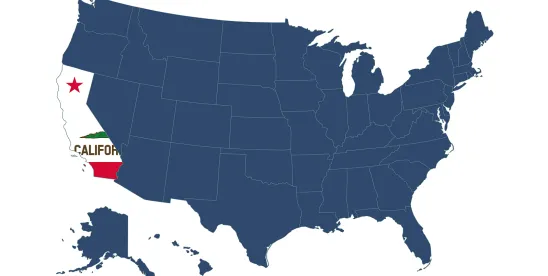On September 29, California Governor Gavin Newsom signed AB 98 into law, imposing new siting restrictions and additional requirements to address the environmental impacts of warehouses within the state. Here, we discuss the impacts of the new law.
Warehouses Generally
As we’ve previously discussed (see here and here), several jurisdictions have recently enacted policies targeting warehouse emissions. For example, some states, like New York, have limited warehouses through laws requiring developers to account for the warehouses’ environmental effects on nearby neighborhoods. In addition, California’s South Coast Air Quality Management District’s Warehouse Actions and Investments to Reduce Emissions program requires reductions in indirect emissions from warehouses.
Requirements Imposed by AB 98
Following this trend, Governor Newsom recently signed AB 98 into law, which imposes several new restrictions on warehouses within the state.
First, the law implements new design and siting requirements for new warehouses, including a setback of 300 feet from “sensitive receptors,” or vulnerable uses such as homes, schools, daycares, parks, nursing homes, and hospitals. In areas that are not zoned for industrial use, or where the zoning had to be changed to accommodate the property, these setbacks are extended to 500 feet. Warehouses also will have to be built on arterial roads, collector roads, major thoroughfares, or local roads primarily used by commercial traffic. If homes are demolished for the warehouse, the law requires two replacement units of affordable housing for every home removed and money equal to 12 months’ rent paid to every displaced tenant. In addition, the law imposes landscaping and screening requirements, such as a wall or landscape berm, to shield warehouses from their neighbors, with landscaping buffers ranging from 50 to 100 feet.
Second, facility operators are mandated to create a “truck routing plan” that shows the routes to and from state highway systems for the vehicles servicing the warehouse and to submit the plan for approval to local governments. The routes will be enforced by the warehouse owner. Among other things, the routing plan must avoid passing sensitive receptors to the maximum extent possible and include measures to prevent truck queuing, circling, parking, or stopping on public streets.
Third, depending on their size, new warehouses will have to use zero-emission technology, meet energy efficiency standards, and prevent trucks from idling their engines.
Existing warehouses appear to be exempted as long as they are not modified in size. The bill specifically exempts (1) logistics use projects approved before the bill’s effective date and (2) any logistics use projects that were subject to a commenced local entitlement process before September 30. However, expansions to current warehouses could trigger imposition of these requirements.
The law also applies statewide but is aimed at addressing development in California’s Inland Empire, as well as other regions of Southern California where the logistics industry is growing. Most of the law’s requirements go into effect on January 1, 2026.
Stay tuned for more developments.





 />i
/>i
